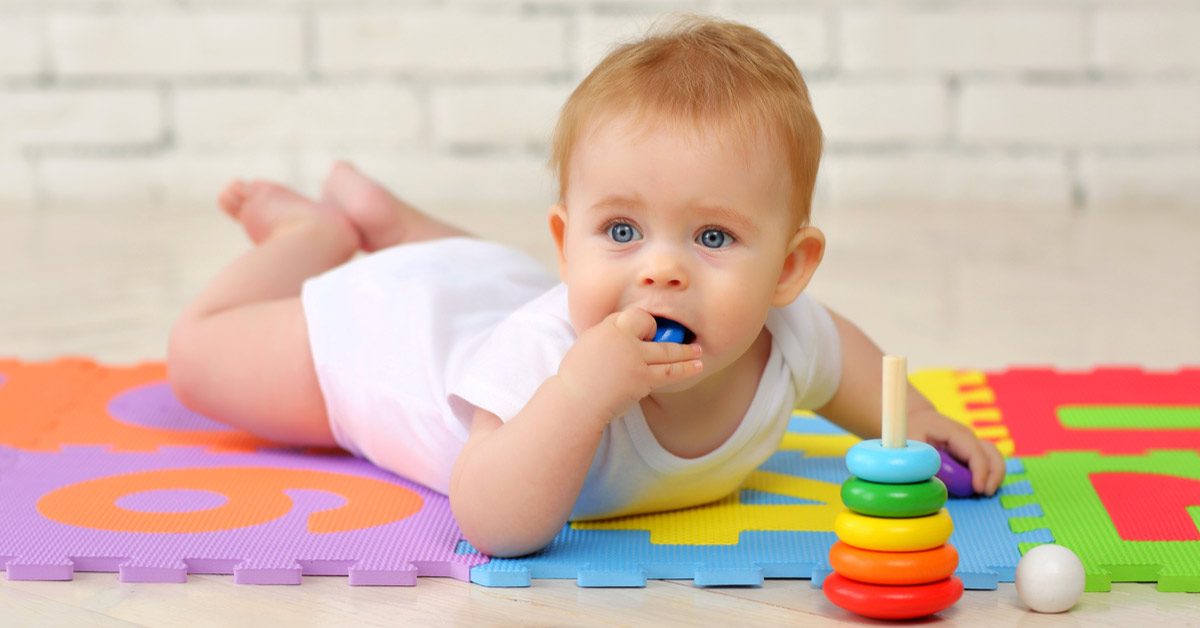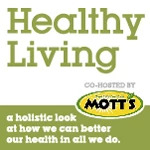
A Mommybites reader asked:
What are some food choking hazards I should avoid for babies?
Babies love putting things in their mouths because that is one of the ways they explore their environment and learn new things. Once they start to crawl, and then learn to walk independently, they discover a whole world of objects that they have access to. Some of these objects are choking hazards. There are many potential choking hazards found in most homes despite our best efforts to make our homes safe for our babies.
Foods
Some of the most serious safety and potentially life-threatening dangers are choking hazards. These hazards can be found pretty much everywhere by an inquisitive baby, even in the most safe and secure home. One such choking hazard, depending on a the baby’s age, is food. From ages 4 to 12 months, babies can choke on many different foods like carrots, beans, cheeses, chicken. At this age all foods should be cut up to a size no larger than a kernel of corn, unless they are purees or soft foods such as mashed potatoes, cooked and mashed squash and sweet potatoes, etc. Foods that present dangers of choking at this age are ones like grapes, carrots, string beans, chicken, uncut cherry or grape tomatoes, raisins, chunks of hotdogs, chips or pretzels, etc. Any food larger than a pea or corn kernel can get stuck in a baby’s throat which can cause choking and lead to respiratory and breathing problems which are life-threatening. Therefore, all foods not soft or pureed need to be cut in small pieces.
Also, foods with skins such as hot dogs (which I would not recommend at all for babies), grape skins are choking hazards too. All foods should be cut up into pieces no larger than 1 inch for toddlers and young children aged 2 years to 5 years. Other food choking hazards are popcorn and nuts. These should never be given to infants under 12 months especially and older babies too. They are serious potential choking hazards which can be life threatening.
Another food that is a potential choking hazard is hard candy, including cough drops, M&Ms, etc. While parents obviously do not give these candies to babies, babies will often find and eat them when they play with purses, look in pockets, couch and chair cushions, under furniture (where potentially dangerous common household items can be often found).
Remember babies want to try whatever you are eating or doing. It’s important if you are eating any of these foods to make sure they are out of reach from your baby, and it is probably best not to eat them around your baby. Pocketbooks may contain many potentially dangerous things including coins, candy, small keys, etc which babies can choke, so it’s important to keep them out of reach.
Balloons
Balloons present another choking hazard. Babies can choke on pieces of a balloon that have popped. Once kids ingest a piece of a balloon, they easily choke on them because the elasticity of the balloon does not allow babies to cough up the material. Additionally the strings also often attached to balloons can get lodged in their throats.
Pet Products
Some other potential choking hazards for babies are pet foods and pet toys. Remember most pet food and pet toys are on the floor making them easily accessible to crawling babies. Babies can choke on pet toys, too. These toys have not been approved for babies or children less than 2 to 3 years of age. Pet’s water bowls are a drowning and choking hazard to babies and are readily accessible. Dogs also leave pieces of bones or chew toys which are accessible on the floor to babies.
Bathroom Objects
Bathrooms are potential sources of choking hazards. There are many small objects babies can get their hands on, like small pieces of soaps, razors, hair ties. All medicine pills are choking hazards in addition to being potentially life threatening dangers when ingested. Babies should never have access to bathrooms without being closely supervised. Toilet bowls with water are another source of drowning and choking for babies and should always be secured with a toilet lock. You can get a toilet lock at any baby store like Buy Buy Baby or Babies’R Us.
Paper
Paper can be a choking hazard to babies as well. Babies will bite off and suck and chew pieces of paper, which can become lodged in their throat. Therefore newspapers, magazines, mail and any other sources of paper around your home are all potential sources of paper. It’s fine to let babies play and tear paper as long as they are closely supervised. We all love doing art projects with babies even if they do make a mess.
Kitchen Dangers
The kitchen is another source of potential choking hazards including kitchen refrigerator magnets, small pieces that are parts of appliances such as mixers, etc. Small toy parts are choking hazards for babies and toddlers. It’s very important when giving a baby a toy to see what ages the toy is recommended because one of the things those guidelines are based is choking hazards. Many toys for children older than 3 years of age are potential choking dangers. The best thing to do is not to have toys with small parts. Babies and toddlers can ingest also small button type batteries, which is a life threatening situations and requires immediate attention in the Pediatric Emergency Room. The battery acid can seriously damage a child’s esophagus and stomach. Other dangerous materials are marbles, bottle caps, jewelry such as rings and earrings and buttons. Older siblings will often give babies and toddlers objects that can be choking hazards because they do not understand the dangers involved.
Never leave a baby or toddler unsupervised with an older child. Even if they appear responsible they do not have the maturity to know what is appropriate for babies and toddlers and they do not know CPR if there was a choking or other life threatening situation with your baby. The choking hazards I have discussed are only some of the many choking dangers all around us. Be observant and aware of the environment that surrounds your baby and toddler. Finally remember your baby and toddler must be supervised by an adult at all times who is hopefully trained in CPR.
 Dr. Gina Lamb-Amato is a general pediatrician and developmental pediatrician who has worked in conjunction with Mount Sinai’s pediatric team. She has a master’s degree in child development and child psychology and works with various child psychologists, performing consultations and evaluations for children 0-12 years old. She also runs parent-child playgroups, where play, art, baby massage, and other techniques are used to help children develop optimally. She has training and expertise in Covid-19, having been on the frontlines. She does consultations for parents to help their children cope with the stress of the pandemic.
Dr. Gina Lamb-Amato is a general pediatrician and developmental pediatrician who has worked in conjunction with Mount Sinai’s pediatric team. She has a master’s degree in child development and child psychology and works with various child psychologists, performing consultations and evaluations for children 0-12 years old. She also runs parent-child playgroups, where play, art, baby massage, and other techniques are used to help children develop optimally. She has training and expertise in Covid-19, having been on the frontlines. She does consultations for parents to help their children cope with the stress of the pandemic.



